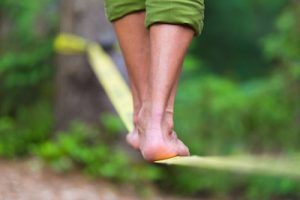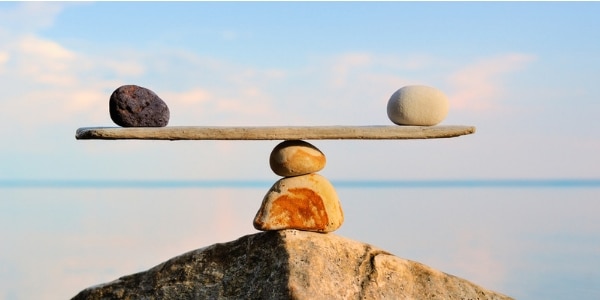A person’s ability to balance is impacted by several intricate bodily systems. Fortunately, there are several effective ways to help work against this problem.
The Reasons Age Impacts Balance
An individual’s balance can decrease with age for many reasons. These are the muscles and bones, the eyes, the inner ear and somatosensory regions.
As people grow older, their muscles and bones naturally weaken. This could be precipitated by a host of illnesses. However, in many instances, natural age progression causes these structures to lose their mass. Moreover, surrounding soft tissue structures such as cartilage, joints, ligaments, and tendons weaken as well. Should this occur in a balance-inducing area like the legs, neck or back, the afflicted individual could easily lose their footing and fall down.
Solid vision is paramount to cultivating better balance. Maintaining stability in any given situation often hinges on a person’s ability to properly perceive their environment. Poor visual skills can easily interfere with one’s perception of their surroundings and therefore be more apt to losing their balance.
Inside the inner regions of the ear lies a critical balance-maintaining region known as the vestibule. This structure works in tandem with neurons in the brain to ensure that individuals can maintain their balance when they execute simple motions such as getting up from a seated or a reclined position. People with inner ear damage often experience a host of unpleasant physical manifestations associated with balance, like attacks of vertigo and nausea.
The eyes also play a critical role in helping the neck, spine, head and other components of the musculoskeletal system remain upright and executing movements designed to ensure balance remains steady. Vision disturbances or neural injuries to structures within the somatosensory region could affect the loss of solid footing.
It is important to realize that as people age, they stand at greater risk for developing a variety of physical and biological ailments that could adversely impact their balance. Such issues include brain diseases, injuries caused by trauma, blood disorders, and hormonal disorders.
Ways to Maintain Balance
Fortunately, there are numerous ways that individuals can preserve or strengthen their balance. Such methods include:
 Healthcare professionals recommend individuals with equilibrium problems engage in exercise on a fairly regular basis. Exercise can strengthen muscles and bones, as well as improve overall coordination, which can be critical to those facing potential episodes of unsteadiness.
Healthcare professionals recommend individuals with equilibrium problems engage in exercise on a fairly regular basis. Exercise can strengthen muscles and bones, as well as improve overall coordination, which can be critical to those facing potential episodes of unsteadiness.
Not receiving enough sleep can impact the body’s equilibrium. Scientific studies conducted have concluded that individuals who get less than the recommended eight hours of sleep per night have a significantly higher risk of sustaining an injury-inducing fall than those who obtained adequate rest.
A systemic lack of fluids can contribute to weakened muscles, as well as underperforming internal systems. Either circumstance could precipitate the development of stability concerns.
Sometimes, simple hazards like an uneven walking surface or a slippery floor can prove just as detrimental to stability issues as an injury or illness. Such pitfalls can be avoided or quickly corrected by paying close attention to your surroundings.
Sometimes, a walking device like a cane or a stick can provide added support for individuals stricken with equilibrium issues.
Receive a Thorough Medical Evaluation
Individuals who have experienced stability problems for longer than a week or two, or when the issue is accompanied by other untoward symptoms, should receive a thorough medical evaluation. A physical examination might reveal the underlying cause. If a doctor can pinpoint the precipitating factors, they will prescribe the most appropriate treatment designed to alleviate or potentially eliminate your struggles with balance.





